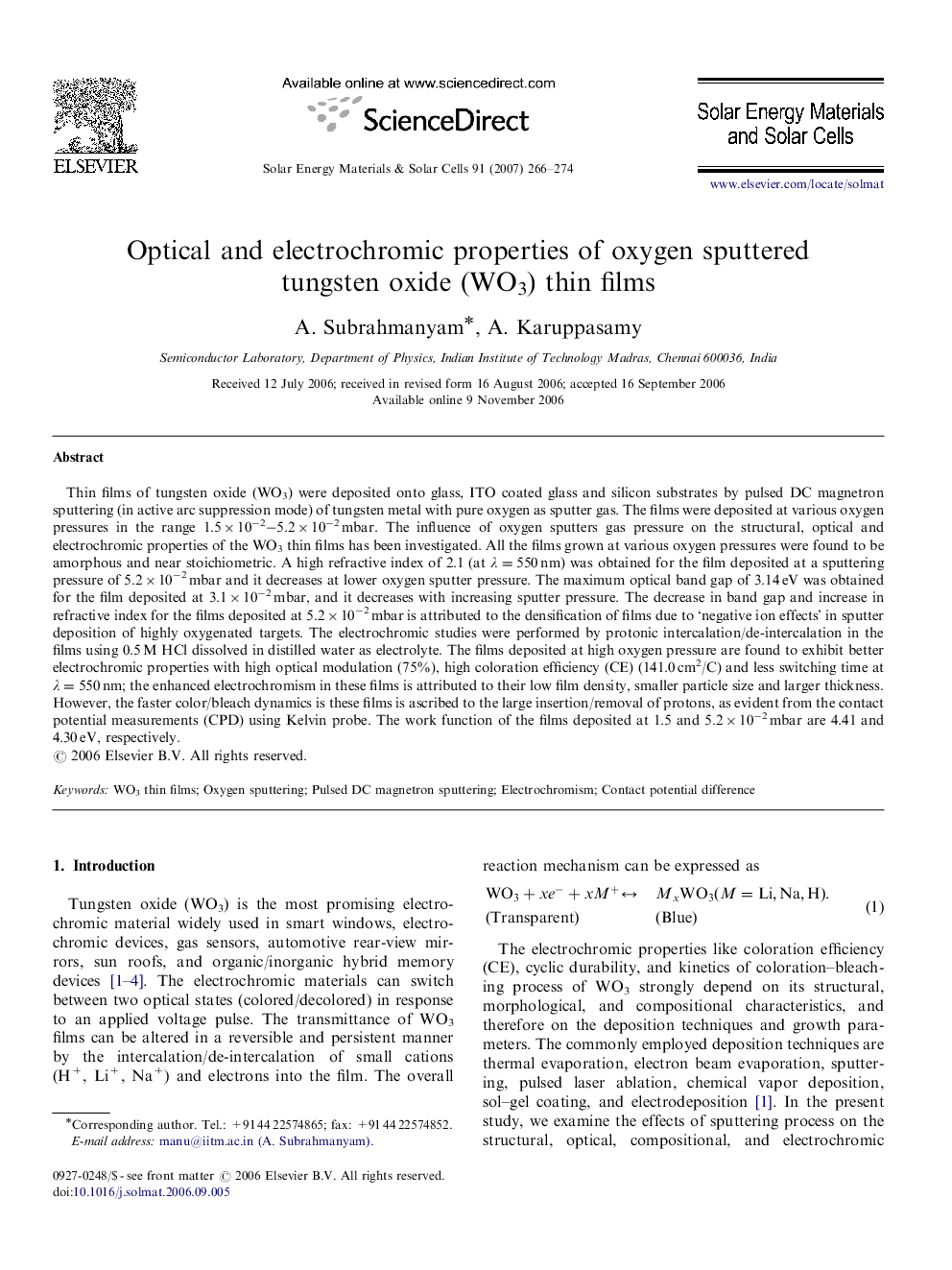| کد مقاله | کد نشریه | سال انتشار | مقاله انگلیسی | نسخه تمام متن |
|---|---|---|---|---|
| 80752 | 49398 | 2007 | 9 صفحه PDF | دانلود رایگان |

Thin films of tungsten oxide (WO3) were deposited onto glass, ITO coated glass and silicon substrates by pulsed DC magnetron sputtering (in active arc suppression mode) of tungsten metal with pure oxygen as sputter gas. The films were deposited at various oxygen pressures in the range 1.5×10−2−5.2×10−2 mbar. The influence of oxygen sputters gas pressure on the structural, optical and electrochromic properties of the WO3 thin films has been investigated. All the films grown at various oxygen pressures were found to be amorphous and near stoichiometric. A high refractive index of 2.1 (at λ=550 nm) was obtained for the film deposited at a sputtering pressure of 5.2×10−2 mbar and it decreases at lower oxygen sputter pressure. The maximum optical band gap of 3.14 eV was obtained for the film deposited at 3.1×10−2 mbar, and it decreases with increasing sputter pressure. The decrease in band gap and increase in refractive index for the films deposited at 5.2×10−2 mbar is attributed to the densification of films due to ‘negative ion effects’ in sputter deposition of highly oxygenated targets. The electrochromic studies were performed by protonic intercalation/de-intercalation in the films using 0.5 M HCl dissolved in distilled water as electrolyte. The films deposited at high oxygen pressure are found to exhibit better electrochromic properties with high optical modulation (75%), high coloration efficiency (CE) (141.0 cm2/C) and less switching time at λ=550 nm; the enhanced electrochromism in these films is attributed to their low film density, smaller particle size and larger thickness. However, the faster color/bleach dynamics is these films is ascribed to the large insertion/removal of protons, as evident from the contact potential measurements (CPD) using Kelvin probe. The work function of the films deposited at 1.5 and 5.2×10−2 mbar are 4.41 and 4.30 eV, respectively.
Journal: Solar Energy Materials and Solar Cells - Volume 91, Issue 4, 15 February 2007, Pages 266–274